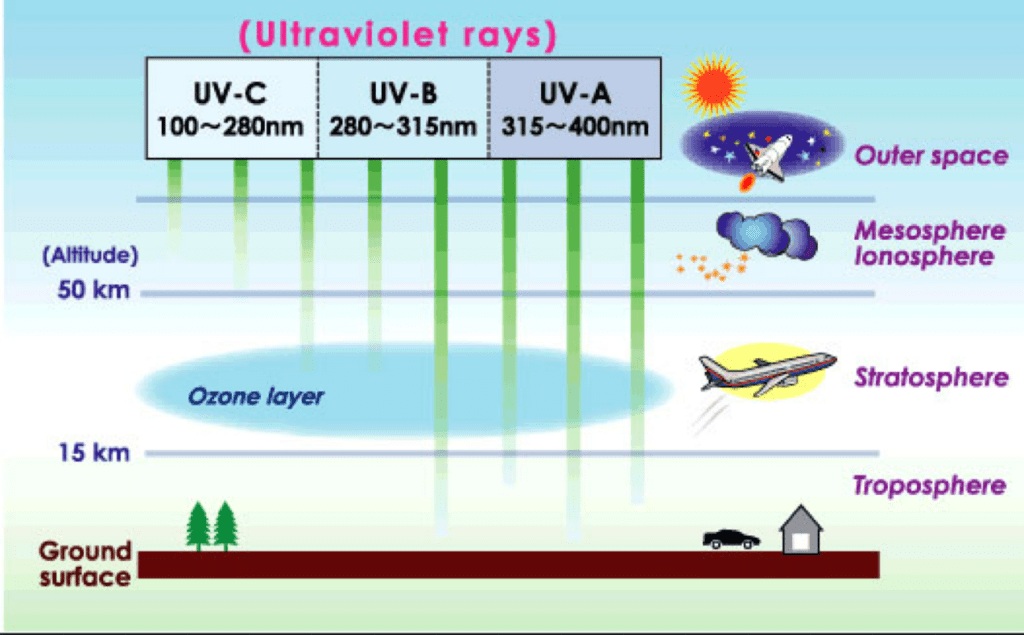Daniel Salzler No. 1081
EnviroInsight.org Four Items December 18, 2020
Feel Free To Pass This Along To Others
If your watershed is doing something you would like others to know about, or you know of something others can benefit from, let me know and I will place it in this Information newsletter.
If you want to be removed from the distribution list, please let me know. Please note that all meetings listed are open.
Enhance your viewing by downloading the pdf file to view photos, etc. The attached is all about improving life in the watershed.
1. Sanitizing With Ultra Violet C Light – A Better Understanding. Using UV light to kill coronavirus: The benefits and risks
UV light sanitizers are popping up as the answer to killing coronavirus on our hands and phones, but consumer devices may have more risks than they’re worth.
Disinfection by way of UV light is nothing new: The International Ultraviolet Association says it’s been a useful technology for over 40 years, contributing to clean water and clean air. Many consumer devices also use UV light to disinfect things, such as self-cleaning UV light water bottles and UV-emitting cases that clean your dirty phone.
A quick primer on UV light: UV light comes primarily from the sun, but there are also man-made sources of UV light, including tanning beds and the currently buzzed-about UV disinfection lamps.

There are three classes of UV light: UV-A, UV-B and UV-C.
UV-A and UV-B light cause sunburns and premature skin aging, and exposure to both is associated with the development of skin cancer. UV-C light, which has the most energy of all three types, is the most harmful, but it fortunately doesn’t reach the Earth’s surface because our atmosphere absorbs it.
There’s man-made UV-C light, too: It’s what’s in the UV light sanitizers that companies claim kill the coronavirus. According to the National Academy of Sciences, it’s probable that this is true, because UV light has been used to disinfect surfaces and water for a long time, and it’s generally successful.
It works because UV-C light is strong enough to destroy the genetic material — either DNA or RNA — of viruses and bacteria. There’s no evidence right now that typical sun exposure can kill the coronavirus, so no, going outside on a sunny day won’t reduce your risk of catching it.
“No UV light device should be a substitute for hand washing, mask-wearing and distancing.” Dr. Tyler Hollmig, director of dermatological surgery at University of Texas Dell Medical School in Austin.
This means what you see may not be what you get — an extremely important consideration, because although very low-dose, far-range UV-C light may not harm humans or animals, using too powerful a dose too close to your skin can indeed be harmful.
Dr. Hollmig helps break down UV light as it relates to skin health. UV light is classified into types based on wavelength, he says, with UV-A light (the longest wavelength) being most associated with skin aging and also with certain skin cancers, and UV-B light (middle wavelength) being associated with sunburn and most skin cancers.
“UV-C light has the shortest spectrum of wavelengths, but is probably the most toxic,” Dr. Hollmig says. “Fortunately, the atmosphere filters out UV-C, so our skin and eyes are typically not exposed to it.” UV-C light is what’s used by sanitizers to kill or inactivate microorganisms by destroying and disrupting their nucleic acids, Dr. Hollmig explains, so if the device is properly tested and properly used, it works to kill pathogens — but something that powerful also has the potential to harm skin. Some potential problems? It can cause burns and is a known carcinogen (as is all UV light), Dr. Hollmig says.
All types of UV light, “including those reaching the Earth’s surface from the sun and those emitted by tanning beds, have not been shown to be protective against the novel coronavirus and can certainly harm the skin,” Dr. Hollmig says. “Additionally, since UV sanitizers employ UV-C light, which can be dangerous, care should be taken to avoid exposure to the skin and eyes. These devices are not designed to be used to disinfect the skin and can be dangerous if used improperly.”
EXAMPLE # !

Self-cleaning water bottles that use UV-C rays to kill germs like Larq water bottles should also be safe when used properly, because they typically only work when the cap is screwed on tight, so no UV-C light can leak out.
EXAMPLE # 2

Plus, the Centers for Disease Control and Prevention say UV light “germicidal effectiveness and use is influenced by organic matter; wavelength; type of suspension; temperature; type of microorganism; and UV intensity.” To effectively kill viruses, UV-C light must be emitted in a range of 200 to 280 nanometers, which has potential for harm.
The International Ultraviolet Association concurs with the CDC, reporting that inactivation of viruses with UV light has been “demonstrated under controlled conditions in the laboratory,” and that “the effectiveness of UV light in practice depends on factors such the exposure time and the ability of the UV light to reach the viruses in water, air, and in the folds and crevices of materials and surfaces.”
In sum: Don’t use any UV light devices directly on your skin. Be careful about using UV light devices on in-home surfaces. Do your research before going to establishments that have installed UV light fixtures. And definitely do not try to get any form of UV light (or any disinfectant, for that matter) inside of your body.
Overexposure to UV-C causes temporary skin redness and eye irritation, but does not cause skin cancer or cataracts.
2. What’s The Most Sustainable Way To Have A Christmas Tree? How To Avoid a Toxic Holiday Chemic-Tree.
Is it more sustainable to buy a real Christmas tree or reuse an artificial one? Family’s usually fall into one of these use groups. One can argue that an artificial tree is more environmentally friendly since it is reusable, but the user of an artificial tree needs to realize that the tree may be coated with harmful lead. On the opposite side of the argument, wouldn’t commercially farmed Christmas trees absorb more CO2 during their lifetimes as opposed to other crops?

Yes, farmed Christmas trees store carbon. But it’s complicated: According to one study, driving 10 miles each way to get a tree offsets the carbon it sequesters. Also, some are sprayed with pesticides. Fake plastic trees are not recyclable, and some of their labels say to avoid inhaling toxic lead dust from the tree’s vinyl needles. Now that’s some toxic chemis-tree!
Looking to avoid toxic holidays? Studies show that what makes us happy are good relationships and sharing via Zoom or Christmas cards or festive meals.
If your family insists on having a single-use tree (B&B), at least buy cut, locally grown, organic trees, such as those recommended by Beyond Pesticides (sc.org/organic-xmas-trees). Later, you can feed them to rescued goats or donkeys at animal sanctuaries. Or find out where to recycle your tree at Earth911.

Now let’s talk about the forest and not just the trees: Why cut trees if you don’t have to, and then put gifts wrapped with dead trees under them? Instead of buying ornaments, decorate with what might be the only vegan, certified 98 percent USDA biobased petroleum-free floss with reusable shiny dispensers called FlossPot Gold by KMH Touches. Better yet, give the gift of bodywork like Somatic Experiencing that can heal emotional and physical trauma. It may help with being cooped up all year.
3. Recycle Correctly This Holiday. Have a Merry Christmas and Recycle Correctly!
Remember once the presents have been opened, use this list from Republic Services when recycling;
ACCEPTABLE AND UNACCEPTABLE RECYCLING ITEMS
Nice List Naughty List
Gift boxes Bubble wrap
Tissue paper Foam peanuts
Shoe boxes Ribbons and bows
Holiday Cards Sticky gift labels
Envelopes Coated gift bags (laminated or dyed) Wrapping paper
Cookie tins (cleaned) Paper Gift Bags (Reuse)
Cardboard boxes
4. Alternatives To Christmas Wrapping Paper: newspaper, comics, brown paper grocery bags, new Aluminum foil, bed sheets, meat wrapping paper, bandanas.
Copyright: EnviroInsight.org 2020
